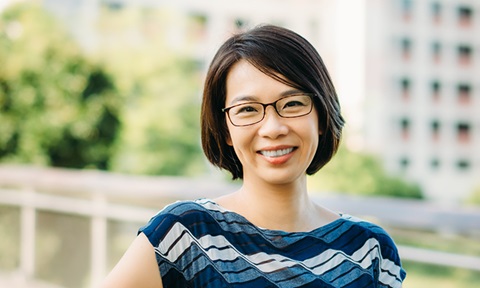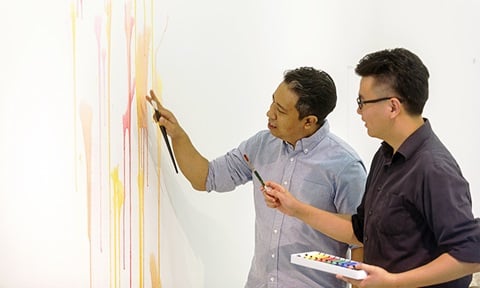Viewpoint: My grandmother bought and ran a school in Sembawang in 1948
SINGAPORE – In 1948, at the age of 23, my grandmother, Madam Zhang Juan, raised $500 to buy Poi Chai school in Sembawang.
Situated in the kampung at Chong Pang, the Chinese-medium school served the children in the area.
In those difficult times, she served not just as the principal managing the school’s administration, but also had to take on the roles of music teacher and operations manager.
To encourage parents to send their children to school, she went door to door visiting families, waiving fees where necessary so that no child would be deprived of an education due to life circumstances.
Life in post-war Singapore was difficult, as individuals and families struggled to pick up the pieces.
No doubt my grandmother was one of those who heeded the call of the 1947 Ten-Year Programme introduced to provide education for all children, though this is something I cannot know for sure.
I had not thought to ask her before she died recently, just before she turned 100.
Training new teachers
To educate the young, the government of the day recognised that more teachers were required. The Teachers’ Training College (TTC) was set up in 1950, first for English-language teachers and later expanded to other language teachers.
After Singapore obtained self-rule in 1959, the courses at TTC were consolidated into a single three-year, in-service and part-time certificate course in January 1960. This was to grow the supply of primary school teachers to meet the needs of new schools.
TTC was replaced with the Institute of Education (IE) in 1973 under the charge of founding director Ruth Wong to focus on enhancing the quality of teacher education and professionalism.
My former mentor Edith See, an English language and literature teacher at Raffles Girls’ Secondary School, remembers teaching in the morning and reporting to IE in the afternoon as one of those in the inaugural batch.
She chose the part-time, 18-month course over the one-year, full-time one because the work-study arrangement included pay, which was necessary to contribute to family expenses, including her younger siblings’ education.
Caring for our children
Beyond the mandate of teaching to upskill a nation to meet its economic goals, teaching in its essence is a caring profession.
American philosopher and educator Nel Noddings (1929 to 2022) highlights that we should “want more from our educational efforts than adequate academic achievement” and that real education can only begin when “our children believe that they themselves are cared for and learn to care for others”.
This labour of caring was why my grandmother knocked on doors to talk to parents, borrowed money to improve the school premises and organised excursions for children who would not have much of a chance to venture out of Sembawang.
At home, she cared for her seven children and, at school, she took care of more.
Emotional work continues to remain a crucial element in teachers’ encounters with students. This is why teaching is paradoxically both so rewarding and exhausting.
Learning to teach
By the time I chose to join the teaching profession in 1999, the Institute of Education had merged with the College of Physical Education to form the National Institute of Education (NIE).
I was part of the last batch of Postgraduate Diploma in Education students to complete my diploma in English Language and Literature at the Bukit Timah campus. In 2000, NIE would move to its current campus at the Nanyang Technological University.
In my first year as a teacher, I saved my lesson plans and resources on floppy disks, and printed Calvin And Hobbes comic strips and other classroom materials on flimsy transparent plastic slides.
Associate Professor Loh Chin Ee is deputy head (research) at the National Institute of Education’s English Language and Literature Academic Group.
I would go to the classroom, switch off the lights and turn on the overhead projector. The light would project an enlarged image of the slide so the entire class could view it.
For their assignments, my students recorded “talk shows” on cassette tapes and, a few years later, would create videos of Shakespeare parodies which they submitted using compact discs.
Fast-forward to 2024: Teachers look for resources on the Student Learning Space and the seemingly infinite worldwide web. They make use of apps such as Google Classroom, Nearpod and Kahoot, and dabble with generative artificial intelligence tools such as Midjourney and ChatGPT to generate lesson ideas and materials.
Besides grappling with new technology, teachers need to be continuously learning about their core discipline and updating their pedagogical knowledge and skills. My former and current students tell me they find time to read, keep up with the news, and go for professional development workshops, so that they can become better teachers for their students.
Teaching the future
The purpose of teaching has not changed, but the context in which teaching occurs has.
Technology has accelerated the rate of transformation. Borders are porous, yet invisible walls may be put up both within a nation and across nations. Our teachers have to constantly adapt, managing their own lives and their students’ lives, to thrive.
At the opening ceremony of the Redesigning Pedagogy International Conference held at NIE in 2024, Education Minister Chan Chun Sing brought up the concept of the “pedagogy of one”, which refers to the personalisation of education for a child according to his or her needs and strengths.
While technology will play a significant role in this move, teachers remain key for educating a nation.
To plan a single 40-minute lesson, a teacher needs to consider the content to be covered, the best pedagogical methods for engaging students and how to make full use of various resources, including technology.
An excellent teacher, as a study of award-winning English-language teachers by my NIE colleagues found, utilises his or her autonomy to design lessons with a student-oriented mindset, flexibly adapting the lessons to optimise learning.
In 1957, Singapore’s literacy rate was 52 per cent.
Today, the country counts as one of the highest performing ones on the Organisation for Economic Cooperation and Development’s Programme for International Student Assessment tests.
More crucially, we continue to engage with the question of how we can create opportunities for our children to flourish.
The education of a nation is accumulative, beginning with my door-knocking grandmother, and many others like her.
To the many educators who continue in her footsteps, happy Teachers’ Day.
- In memoriam Madam Zhang Juan, 1925-2024
- A former secondary school teacher, Associate Professor Loh Chin Ee is a teacher educator at the National Institute of Education, Nanyang Technological University.
Read the original article here.
Source: The Straits Times © SPH Media Limited. Permission required for reproduction.














/enri-thumbnails/careeropportunities1f0caf1c-a12d-479c-be7c-3c04e085c617.tmb-mega-menu.jpg?Culture=en&sfvrsn=d7261e3b_1)

/cradle-thumbnails/research-capabilities1516d0ba63aa44f0b4ee77a8c05263b2.tmb-mega-menu.jpg?Culture=en&sfvrsn=1bc94f8_1)

7e6fdc03-9018-4d08-9a98-8a21acbc37ba.tmb-mega-menu.jpg?Culture=en&sfvrsn=7deaf618_1)



.tmb-listing.jpg?Culture=en&sfvrsn=873188e4_1)
.tmb-listing.jpg?Culture=en&sfvrsn=42706a68_1)

